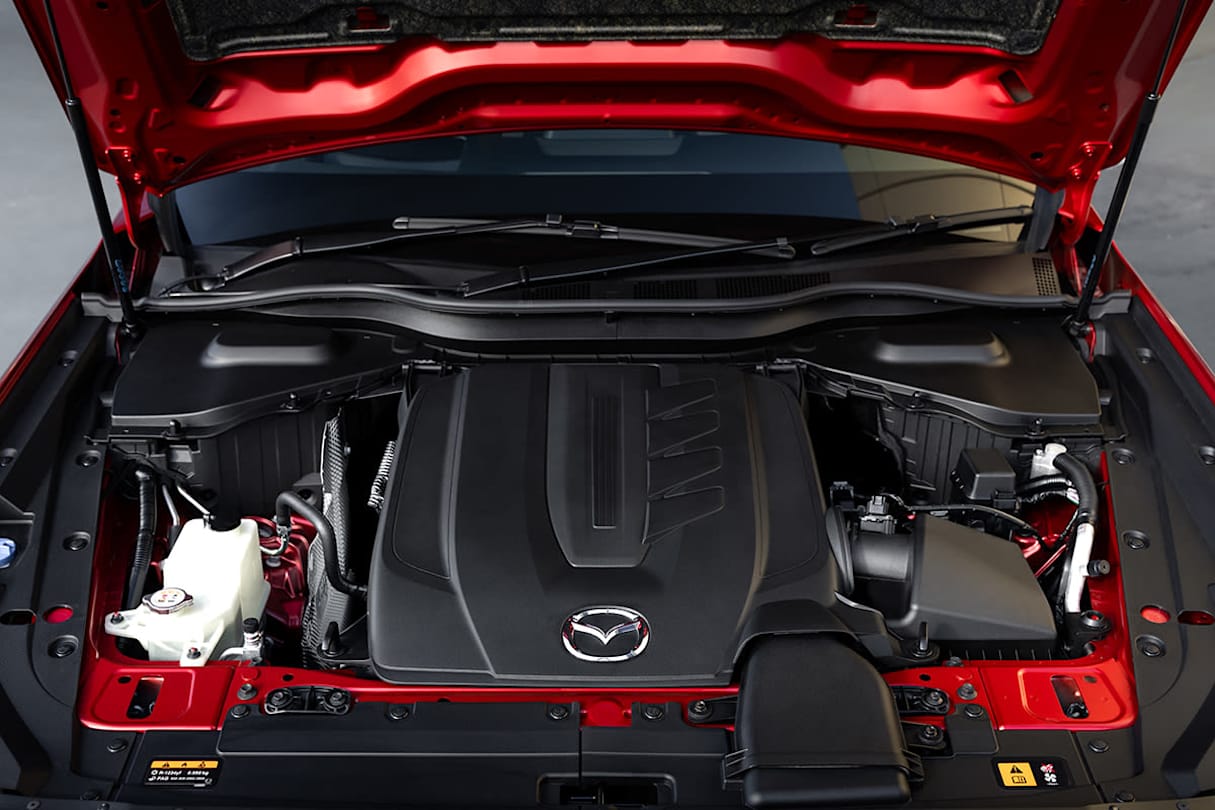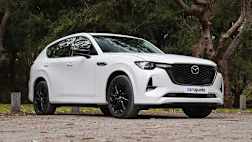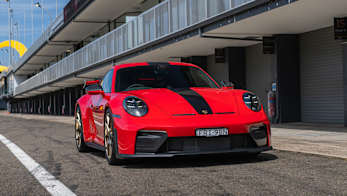In a previous role I labelled the Mazda CX-60 as my biggest disappointment of the year when it launched locally in 2023.
Since its launch Mazda has taken on feedback and continually tweaked and fixed this premium-pushing medium SUV.
Earlier this year there was another change to the suspension and now the company has introduced a new entry-level engine option to bring down the price tag and hopefully improve its appeal.
-
Fan-favourite SUV still on the wish list for Aussie launch: 2026 Mazda CX-50 only for left-hand drive markets for now as turbo-petrol Toyota RAV4, Hyundai Tucson and Kia Sportage rival
-
'Remains a niche technology': 2026 Mazda CX-70 and CX-90 plug-in hybrid still uncertain for Australia to battle Omoda 9 and BYD Sealion 8, but more electric cars are a possibility
-
Why Mazda doesn't have too many family SUVs: 2026 Mazda CX-60, CX-70, CX-80 and CX-90 give customers a reason to stick with the Japanese brand: executive
As a promotion for its debut, the entry-level CX-60 G25 Pure is $47,990 drive-away which is a wild starting price for a vehicle that still looks and feels premium inside.
This is $6000 cheaper than the G40e Pure with the inline-six petrol mild-hybrid. It’s also firmly in CX-5 territory which is great if you’re wanting a mid-size SUV with a bit more interior and boot space.
The G25 2.5-litre naturally aspirated four-cylinder petrol engine will be familiar if you’ve driven other Mazdas before. It’s been in the CX-5, for example, for every single generation, including the forthcoming, third-generation model.
In the CX-60 it produces 138kW and 250Nm which is down considerably on the inline-six and plug-in hybrid powertrain options.
It doesn’t sound like a lot of paper but it certainly makes the most of what it’s got. General acceleration around town is decent, but it doesn’t take much for the power and torque ceiling to reveal itself.
Rolling acceleration is also decent. The car picks up speed from 80km/h without having to dive back gears or flaring the revs too drastically.
Some Mazdas with this engine sound a little buzzy and wheezy when pushed harder, but in the CX-60 it has a meaty tone much like the inline-six engines.
A big point of difference between other Mazdas with this 2.5-litre engine is they come mated with a six-speed torque-converter automatic, whereas the CX-60 gets an eight-speed multi-clutch automatic, like the rest of Mazda's large SUV range (CX-70, 80 and 90).
The extra gear ratios are well received, allowing the engine to stay within the torque band more often and keeping the revs down lower where possible to reduce fuel consumption.
However, Mazda’s multi-clutch automatic isn’t fantastic. It can shudder and feel hesitant between the first few gears in slow-moving traffic, much like a dual-clutch automatic.

Another bugbear is the transmission tries to hold high gears for too long. There were moments where I’d turn a corner and need to accelerate up a hill, and the car would bog at around 1000rpm, drop numerous gears and flare the revs above 3000rpm.
This doesn’t completely ruin the interior ambience, but you do need to learn to anticipate hills and work around this transmission’s quirks.
You can tell Mazda has put a lot of effort into refining the CX-60’s suspension and ride. With the lighter engine and reduced complexity of only being rear-wheel drive, it feels more compliant, rounding out harsher bumps.

Regardless the ride still errs on the firmer side, especially at the rear. There’s tight body control which still feels European.
Beyond this, the CX-60 with the 2.5-litre engine looks and feels like the other engine options. It’s worth noting the four-cylinder is only offered on the Pure, Evolve and Touring trims. If you want the higher-spec GT and Azami trims, you’ll need to opt for a different engine.
Something else to note is the CX-60 2.5-litre only has a payload of 425kg which is down between 115-150kg compared with the other engine options, despite them being heavier.
This is a major red flag because if you load up the car with five people and their luggage, you may be over the vehicle’s gross vehicle mass (GVM) of 2272kg, which is the maximum weight the vehicle can legally be with occupants, fuel and cargo.
Additionally the CX-60 2.5-litre has the lowest braked towing capacity of the line-up. It can only tow up to 1800kg, whereas the D50e and P50e can tow 2000kg and the G40e can tow 2500kg.
Mazda CX-60 2026:
| Engine Type | |
|---|---|
| Fuel Type | |
| Fuel Efficiency | |
| Seating | 0 |
| Price From | $47,990 |
Verdict
On paper this 2.5-litre engine doesn’t sound the best for the CX-60, but in practice it’s likely all the engine you would ever need out of a car like this. Unless you really want the fuel-saving benefits the plug-in hybrid brings, it could arguably be the pick of the engine line-up, especially from a value perspective.
However, it's still not perfect. The transmission is finicky, the ride can be a little on the firm side, and the low payload figure limits this car’s family hauling potential.
Note: CarsGuide attended this event as a guest of the manufacturer, with meals and accommodation provided.








.png)





































.png)





.png)
.png)
.png)





.png)



.png)












.png)




.png)










.png)





.png)



















.png)




.png)

.png)
.png)






.png)



.png)
.jpg)



.jpg)

